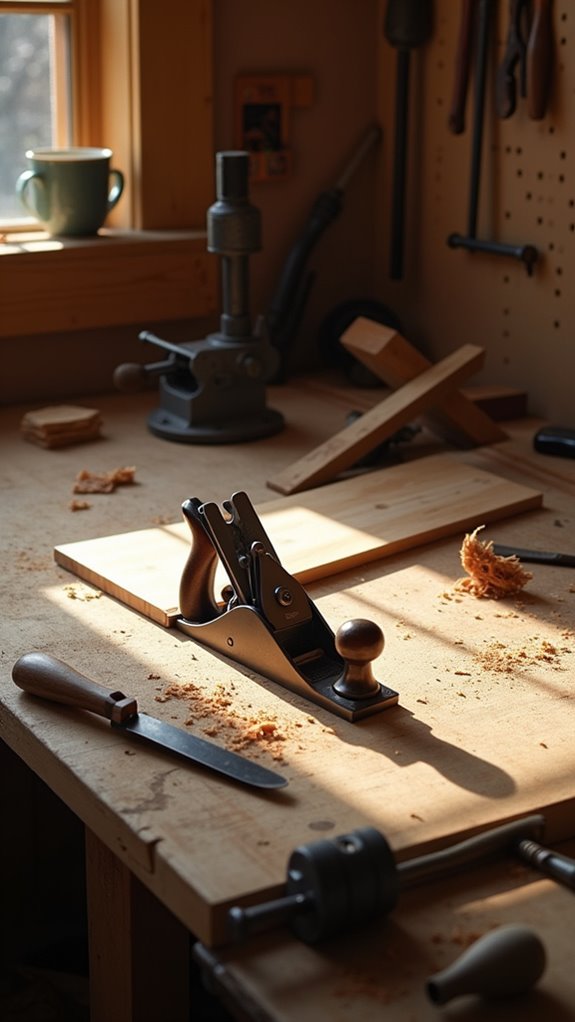I’ve discovered seven workshop hacks that can transform how you approach woodworking, saving time and effort while keeping your space organized. From magnetic tool holders for quick access to a DIY sawdust collection system that maintains cleanliness, these tips are practical and easy to implement. Whether you’re tackling small projects or organizing scraps, these solutions can elevate your workflow. Curious how these ideas can make your workshop more efficient? Let’s explore them together.
Magnetic Tool Holder for Easy Access
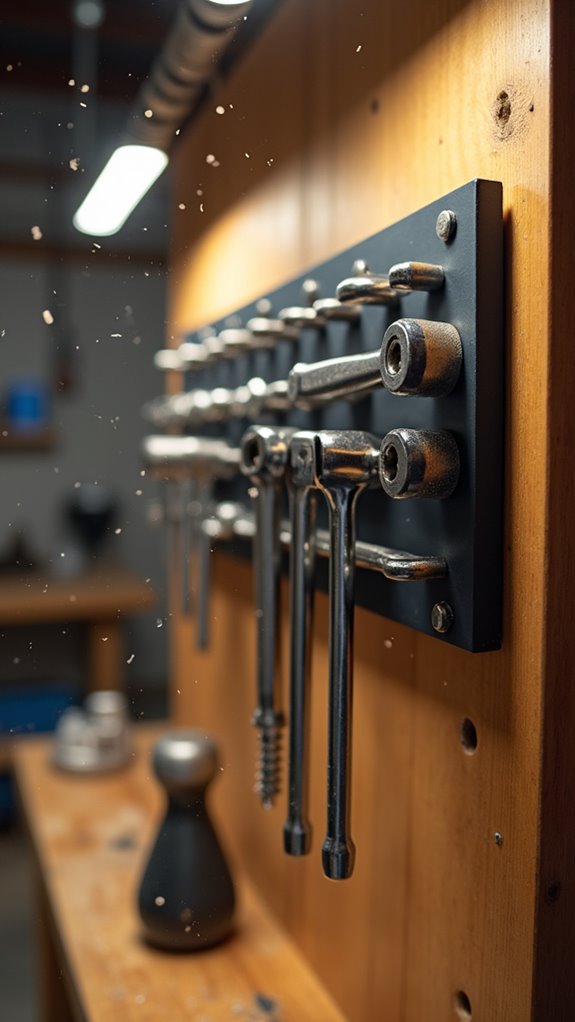
A magnetic tool holder is one of the simplest yet most effective upgrades I’ve added to my workshop. It’s transformed my workflow by providing magnetic tool storage that keeps everything within arm’s reach. I no longer waste time searching for tools—they’re right where I need them. This setup guarantees efficient tool access, letting me focus on the project at hand without distractions. It’s a game-changer for productivity.
DIY Sawdust Collection System
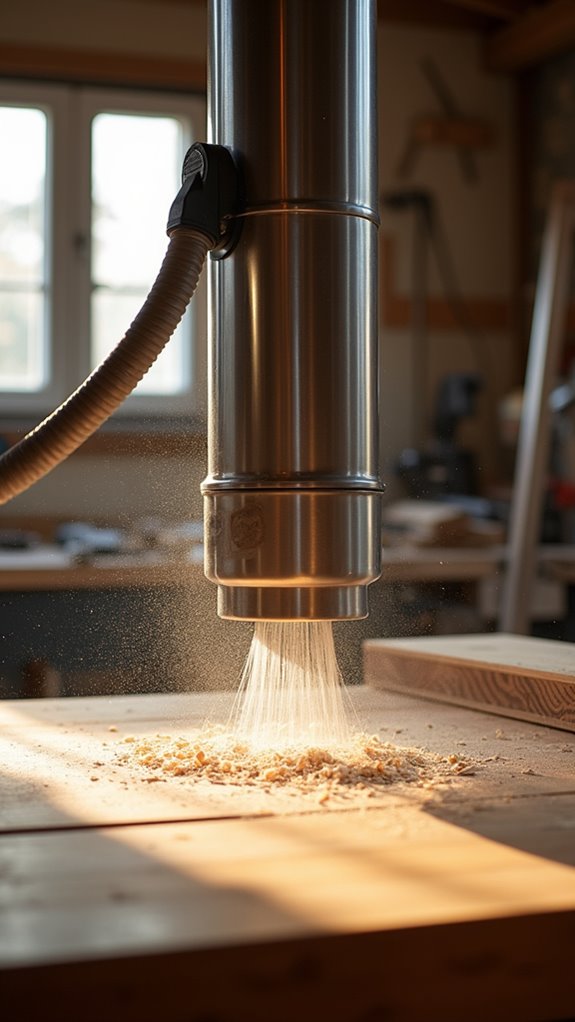
While working on wood projects, I’ve found that managing sawdust can quickly become a major hassle if not addressed properly. To tackle this, I built a DIY sawdust collection system using an efficient vacuum attachment connected to my tools. This setup not only keeps my workspace clean but also simplifies sawdust disposal methods, giving me more freedom to focus on the creative process.
Customizable Pegboard Organization
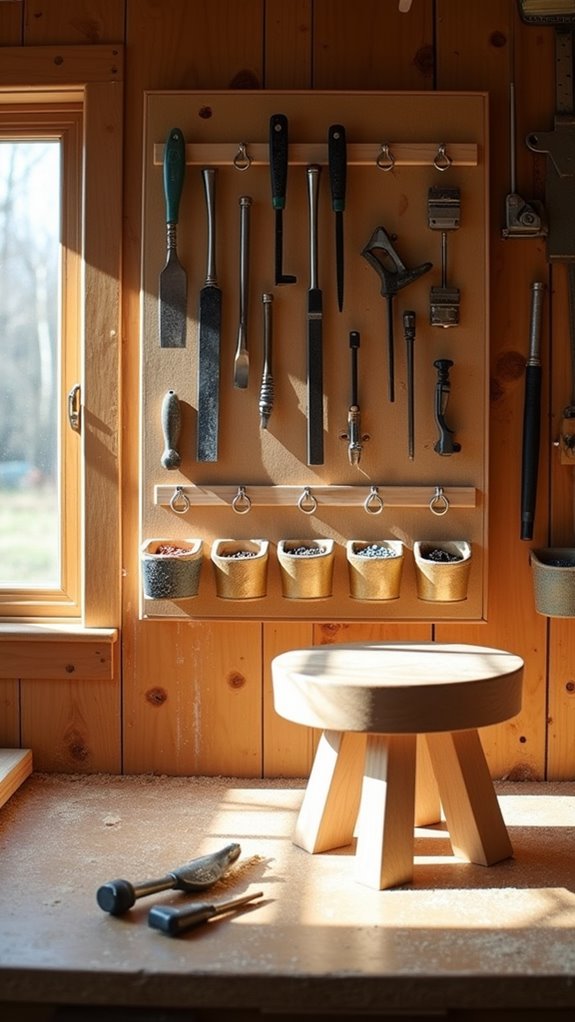
Keeping a workspace organized can make woodworking projects much more efficient. I’ve found that pegboard panels are a game-changer for tool layout, offering unmatched flexibility. By arranging hooks, shelves, and bins, I customize my setup to fit my workflow. This system keeps tools visible and accessible, saving time and reducing frustration. Experiment with different configurations to create a space that truly works for you.
Quick-Clamping Solutions for Small Projects
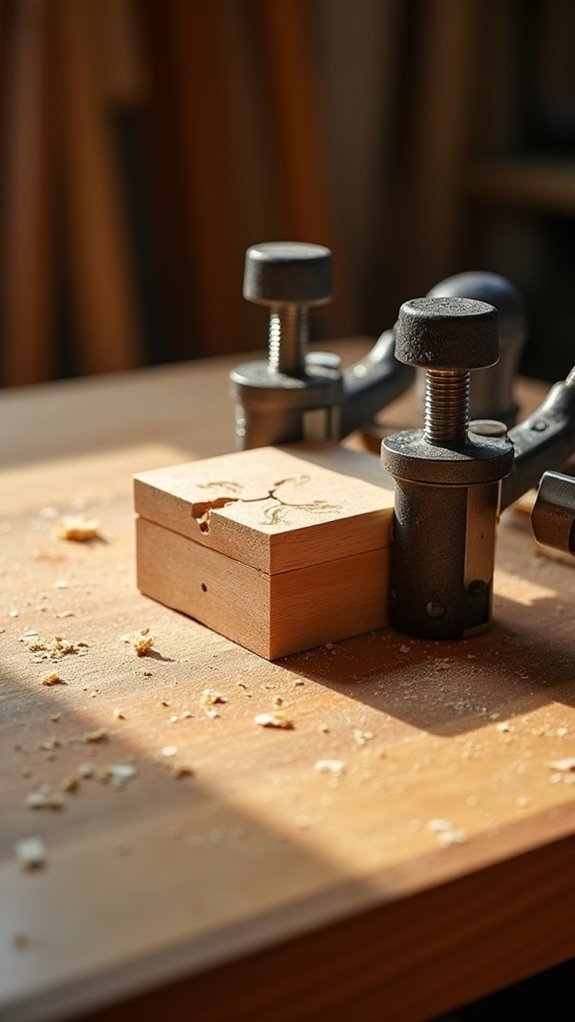
When working on small projects, I’ve found that quick-clamping solutions can markedly streamline the process and provide precision. Spring clamps and one-handed bar clamps are my go-to tools because they’re lightweight, easy to maneuver, and deliver consistent pressure without requiring constant adjustments. For more tailored needs, I explore quick clamp designs and project specific clamps, which facilitate efficiency and accuracy while keeping my workspace uncluttered.
Reusable Sanding Block With Ergonomic Grip
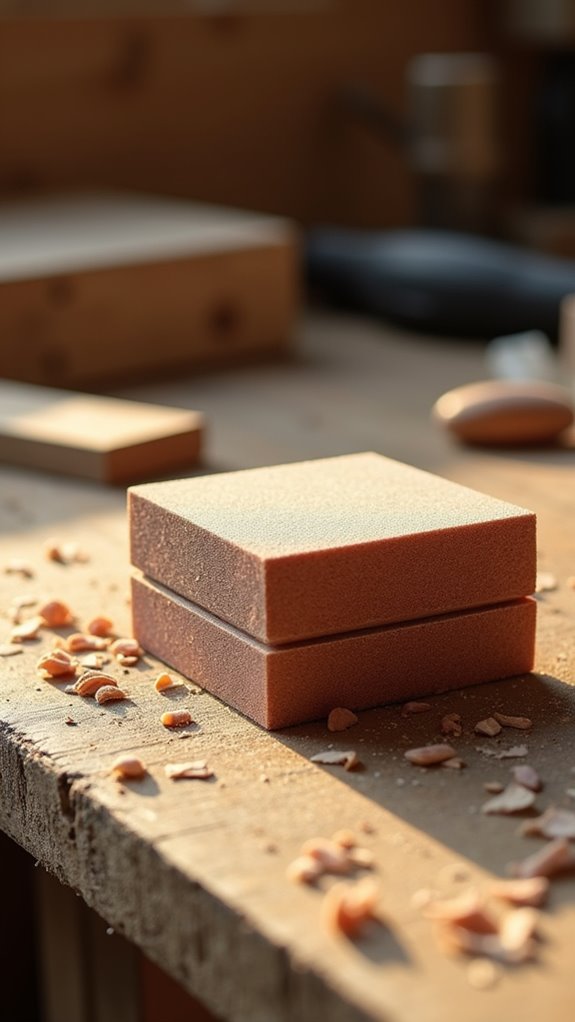
A reusable sanding block with an ergonomic grip can greatly enhance both comfort and efficiency during woodworking tasks. I’ve found that using durable block materials like rubber or cork guarantees longevity and better control. It’s perfect for refining curves and edges with consistent pressure. Pairing it with proper sanding techniques, such as working with the grain, lets me achieve smoother finishes without straining my hands.
Wood Scrap Storage for Future Use
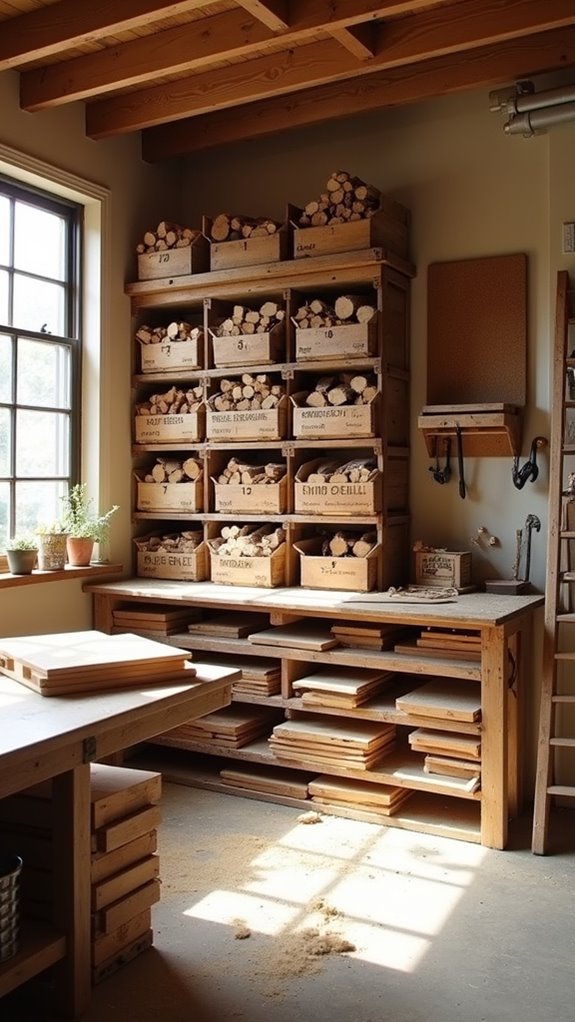
Since I’ve accumulated countless wood scraps over the years, I’ve discovered that organizing them efficiently saves time and reduces waste. I sort by size and type, storing smaller pieces in labeled bins and larger offcuts on wall-mounted racks. This system makes wood scrap projects a breeze—no more digging through piles. Efficient storage keeps my workspace clutter-free and guarantees every scrap gets a second life when inspiration strikes.
Portable Workbench With Built-In Storage
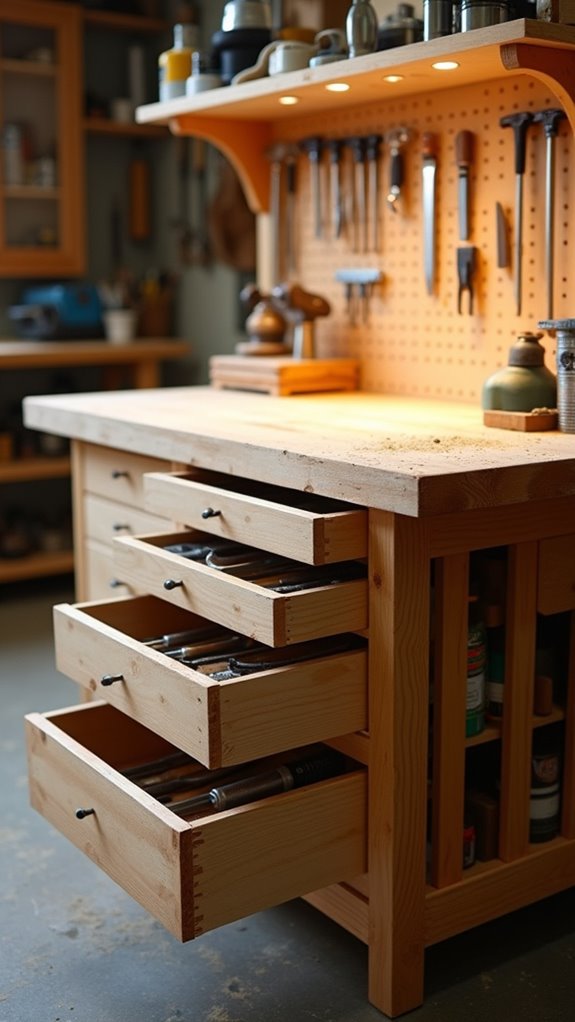
Having a portable workbench with built-in storage has transformed how I approach projects in my workshop. Its foldable design lets me move it effortlessly, while the integrated tool cart keeps my essentials organized and within reach. I’ve gained the freedom to work anywhere without sacrificing efficiency. It’s perfect for small spaces or outdoor jobs, proving that practicality doesn’t have to limit creativity or mobility.
Frequently Asked Questions
How to Prevent Wood From Splitting During Cutting?
Cutting wood without splitting it’s like dancing with the grain—you’ve got to move with its rhythm. I always align my cutting technique to follow the wood grain’s flow, letting it guide the blade naturally.
What’S the Best Finish for Outdoor Wooden Projects?
I’d choose outdoor stains with UV protection; they penetrate deep and preserve the wood’s natural beauty while shielding it from weather. A top layer of polyurethane or spar varnish adds durable protective coatings for long-lasting freedom from damage.
How to Restore Old, Worn-Out Woodworking Tools?
To restore old woodworking tools, I start with tool cleaning, gently scrubbing off grime with soapy water. For rust removal, I use vinegar or a rust remover, then polish and sharpen them, giving them new life to work freely.
Which Type of Wood Is Best for Beginners?
I’ve found pine wood’s softness and affordability make it ideal for beginners, letting me practice without fear. Hardwood options like oak can be trickier, but pine gives me the freedom to learn and grow confidently.
How to Sharpen Chisels and Hand Planes Effectively?
I keep my chisels and hand planes sharp by mastering chisel maintenance tips and plane sharpening techniques. I use a consistent angle, hone regularly, and test edges often—it’s liberating to work with tools that feel like extensions of my hands.

